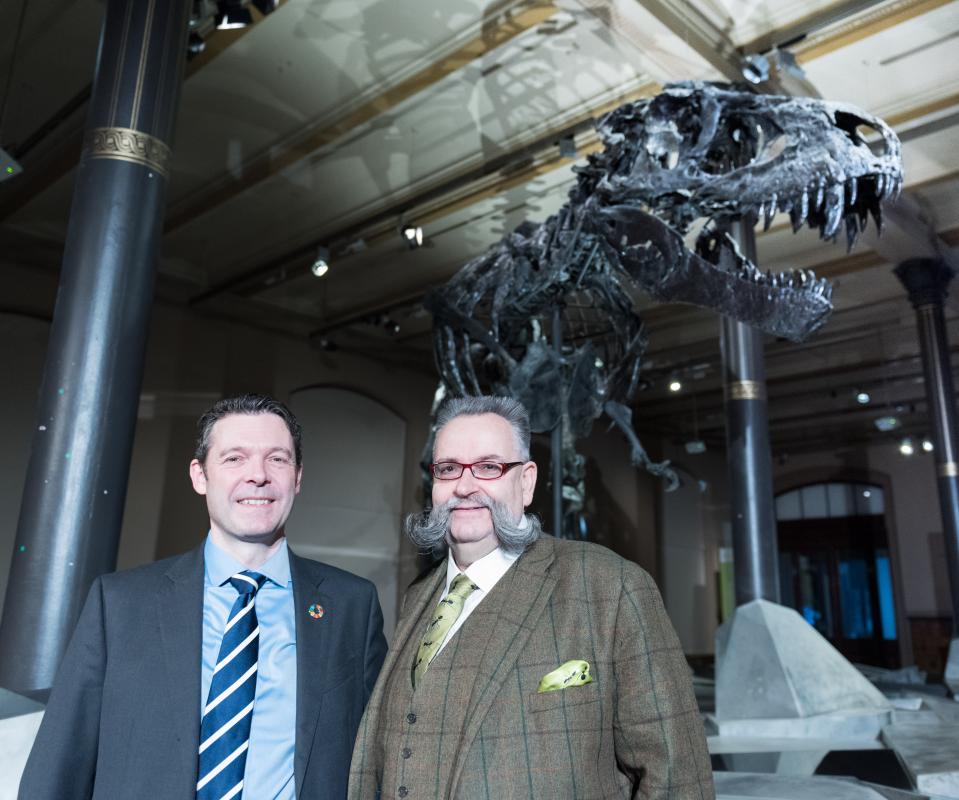For four years and around three million guests, the skeleton of Tyrannosaurus rex at the Museum für Naturkunde Berlin was a delight. Tristan Otto was enthusiastic about NATURE and inspired us to deal with current questions about the future of our planet. At the end of January 2020, Tristan Otto will travel to Denmark's National Natural History Museum in Copenhagen. The large natural history museums see themselves as a common scientific, global infrastructure in which the Museum für Naturkunde Berlin assumes responsibility and makes its knowledge available worldwide. It is therefore a matter of course for the research museum to make its objects available to all for research and knowledge transfer.
Tristan Otto is ambassador of this common will. "Dinosaurs are global networkers for nature", says Johannes Vogel, Director General of the Museum für Naturkunde Berlin. "Tristan Otto will return to Berlin and become part of the newly planned science campus, which will be built over the next ten years together with the Humboldt University Berlin and other partners on the Invalidenstraße 42/43 campus." Peter Kjaergaard, director of the Statens Naturhistoriske Museum in Copenhagen says: "Tristan is also a story of friendship between two museums, two cities and the people in Germany and Denmark."
Tristan Otto – King of Dinosaurs
The exhibition King of Dinosaurs is open from 2 April 2020 to 28 March 2021 in Statens Naturhistoriske Museum and focus on the relationship between predators and prey, including how the various dinosaurs evolved to become either better hunters or the opposite – to avoid being eaten. The focal point is Tristan Otto - one of the world's most complete Tyrannosaurus rex fossils. Through him and a number of other unique dinosaur fossils, the present and future story of the Earth's past is told. King of Dinosaurs is also the story about how a seemingly dominant animal group ended up extinct.
The exhibition reminds us how unique life is on our blue planet and how humans are influencing it. However, unlike the dinosaurs, we actually have an opportunity to stop and reverse the negative evolution, thus avoiding a sixth mass extinction.
